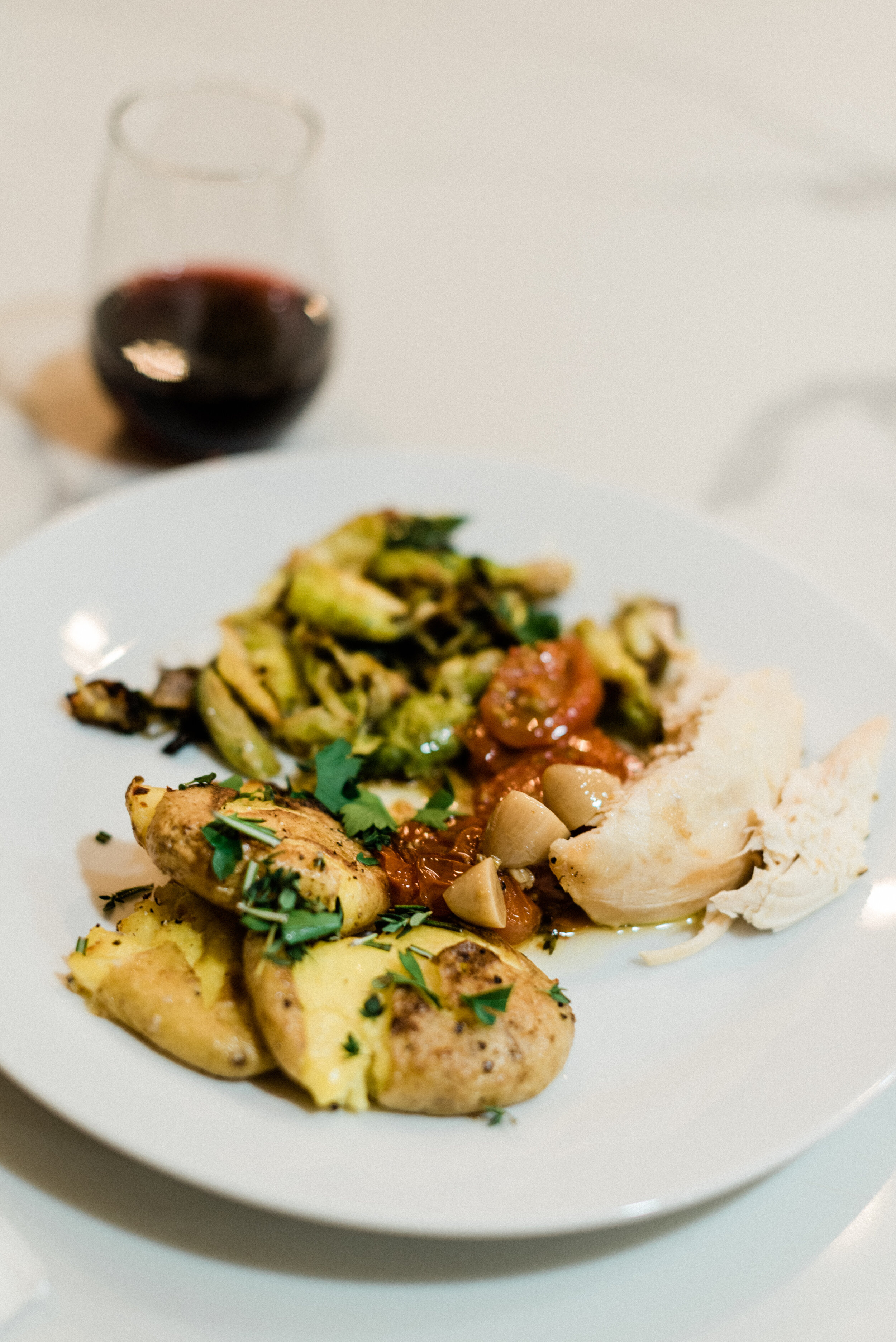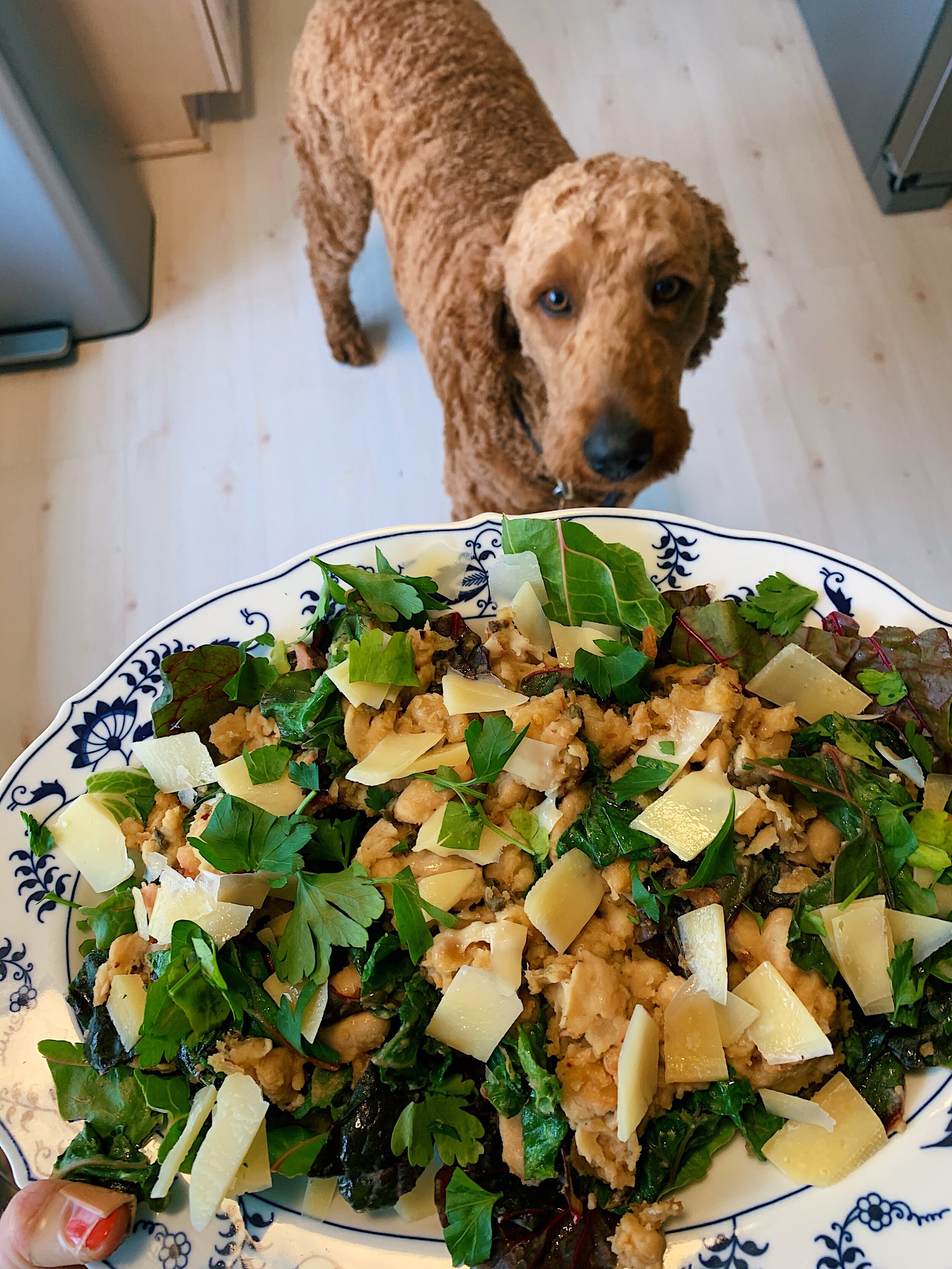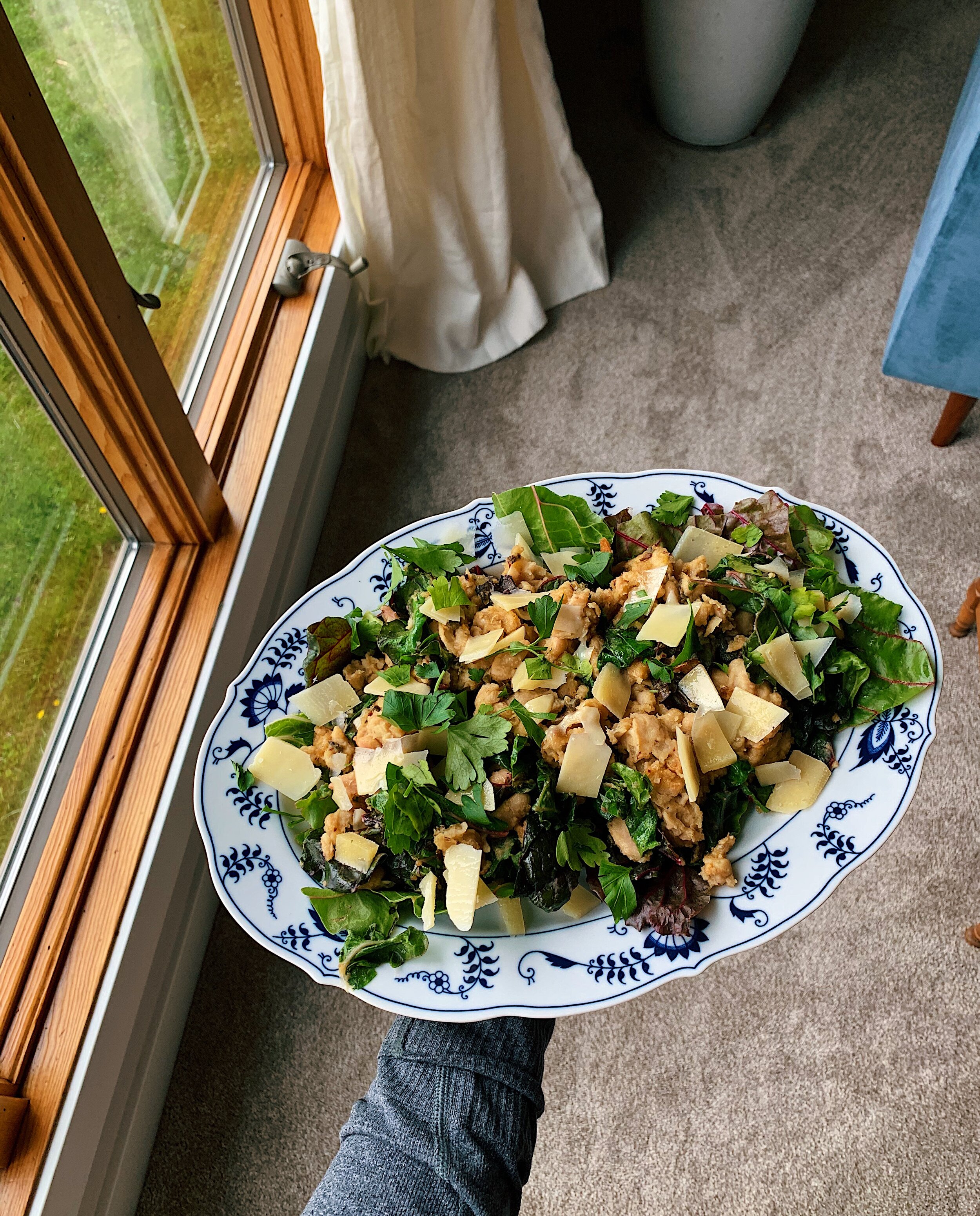I’ll admit I was skeptical about anchovyed walnuts. I wasn’t in the mood for fishy nuts as I started my dinner prep. To be honest, anchovyed anything never sounds appealing to me. And yet, I thoroughly enjoy eating anchovyed foods 9 out of 10 times they’re on my plate. So, it was past experience that pushed me to follow through with Alison’s instructions, not my appetite.
And like most of my prior experience, these anchovyed walnuts were delicious. In a pot filled with a ¼ cup of olive oil, toast a cup of coarsely chopped walnuts until fragrant and golden. Remove from heat, and swirl in anchovies and grated garlic until the anchovies have melted and disappeared. Set them aside for later, and also snack on them while you make the rest of dinner. They’re just as nice on their own, and they’re not too fishy.
We eat oven-roasted green beans, tossed with olive oil, salt, and pepper, about every 1-2 weeks here, so preparing the beans was a simple repetition for me. Alison has you throw in some thinly sliced lemon pieces, another standard addition in my kitchen. While everything gets lightly charred in the oven, prepare a simple dressing made of whole grain mustard, white wine vinegar and olive oil. When the beans are done, they get tossed in this tangy vinaigrette.
The last step is to plate the saucy lemon and beans and sprinkle with whatever walnuts are left, post-snacking. The whole dish is bursting with my kind of flavor palette (I LOVE anything that boasts salt and vinegar). And the toasty walnuts are a nice textural contrast to the beans and charred lemon. While I don’t think I’ll go out of my way to make beans like this all the time, I do think I’ll start to go this route more often when I’m up to the extra steps. The reward is certainly worth it.
63 recipes cooked, 162 to go.




























